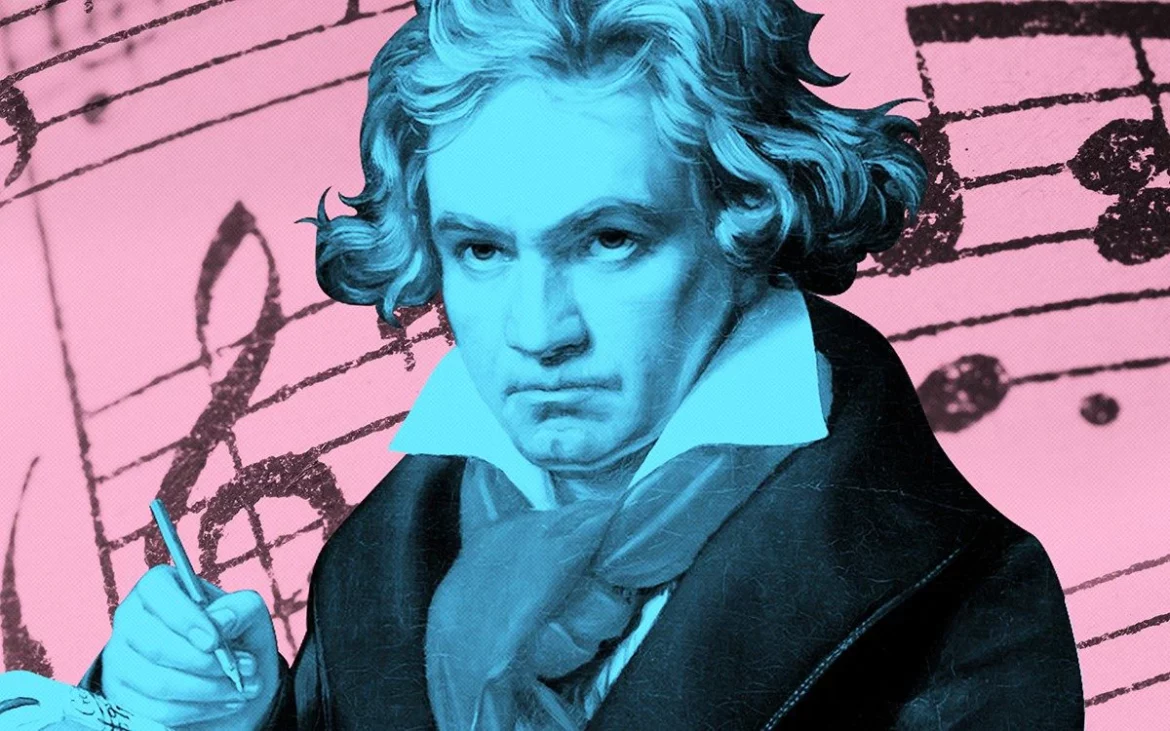Ludwig van Beethoven, one of the most renowned composers in the history of Western classical music, has left an indelible mark on the musical world. His compositions range from symphonies to sonatas, each showcasing his genius and innovation. Among his numerous works, Beethoven’s use of the rondo form stands out as a testament to his mastery of structure and thematic development. This article delves into the intricacies of Beethoven’s rondo form, exploring its characteristics, notable examples, and the composer’s unique approach to this musical structure.
I. Understanding the Rondo Form
Definition and Characteristics
The rondo form is a musical structure characterized by the recurrence of a principal theme, known as the refrain, which alternates with contrasting sections called episodes. The basic pattern can be represented as ABACA, where ‘A’ is the refrain and ‘B’ and ‘C’ are the episodes. This form creates a sense of familiarity and balance, as the listener is repeatedly brought back to the main theme after each contrasting section.
Historical Context
The rondo form has its roots in the Baroque period, but it gained significant popularity during the Classical era. Composers like Haydn and Mozart frequently employed this form, appreciating its ability to create a lively and engaging musical narrative. Beethoven, influenced by his predecessors, adopted and expanded the rondo form, infusing it with his unique musical language.
II. Beethoven’s Approach to the Rondo Form
Innovative Variations
Beethoven’s rondos are distinguished by their inventive use of the form. While he adhered to the traditional structure, he often introduced variations that added complexity and depth. For instance, he might alter the refrain slightly each time it returns, or he might extend the episodes, weaving intricate developments and modulations into the fabric of the music.
Emotional and Dramatic Range
Beethoven’s rondos are notable for their wide emotional and dramatic range. Unlike the light and playful rondos of earlier composers, Beethoven’s versions often explore profound and intense emotions. This can be seen in his piano sonatas and chamber works, where the rondo form serves as a canvas for both lyrical and tumultuous expressions.
III. Notable Examples of Beethoven’s Rondo
Rondo a Capriccio in G Major, Op. 129 (“Rage Over a Lost Penny”)
One of Beethoven’s most famous rondos, the Rondo a Capriccio in G Major, Op. 129, is a brilliant example of his playful and virtuosic style. Often referred to as “Rage Over a Lost Penny,” this piece features a lively and whimsical theme that recurs throughout, interspersed with rapid, technically demanding episodes. The piece is a tour de force, showcasing Beethoven’s ability to blend humor and brilliance.
Piano Sonata No. 8 in C Minor, Op. 13 (“Pathétique”) – Third Movement
The third movement of Beethoven’s “Pathétique” Sonata is a rondo that contrasts sharply with the dramatic intensity of the preceding movements. The main theme is lyrical and flowing, providing a sense of resolution and calm. However, Beethoven’s skillful use of contrasting episodes adds depth and complexity, making this rondo a powerful conclusion to the sonata.
String Quartet No. 9 in C Major, Op. 59, No. 3 – Fourth Movement
In the fourth movement of his String Quartet No. 9, Beethoven employs the rondo form to create a lively and dynamic finale. The main theme is energetic and rhythmic, driving the movement forward with relentless momentum. The contrasting episodes explore a range of moods and textures, from delicate and lyrical to robust and forceful, demonstrating Beethoven’s mastery of the quartet medium.
IV. Analyzing Beethoven’s Rondo
Structural Elements
Beethoven’s rondos typically adhere to the traditional ABACA structure, but he often expands and elaborates on this framework. The refrains are usually memorable and well-defined, serving as anchor points throughout the piece. The episodes, on the other hand, provide opportunities for thematic development and contrast, often featuring intricate counterpoint and harmonic exploration.
Thematic Development
One of Beethoven’s key strengths as a composer is his ability to develop themes in innovative and compelling ways. In his rondos, he frequently introduces variations to the refrain, altering its rhythm, harmony, or texture to maintain interest and drive the musical narrative. The episodes often present new material that is then integrated with the main theme, creating a cohesive and dynamic structure.
Harmonic and Rhythmic Innovation
Beethoven’s use of harmony and rhythm in his rondos is particularly noteworthy. He often employs unexpected modulations and harmonic shifts, creating a sense of surprise and tension. His rhythmic innovations, such as syncopation and irregular phrase lengths, add further complexity and excitement to the music. These elements combine to make Beethoven’s rondos both intellectually stimulating and emotionally engaging.
V. The Legacy of Beethoven’s Rondo
Influence on Subsequent Composers
Beethoven’s innovative approach to the rondo form had a profound impact on subsequent composers. His ability to balance structure with expressive freedom inspired many, including Schubert, Brahms, and even later Romantic composers like Liszt and Chopin. The rondo form continued to evolve, with composers building on Beethoven’s legacy to create new and varied interpretations.
Continued Popularity
Today, Beethoven’s rondos remain popular among performers and audiences alike. Their combination of technical brilliance, emotional depth, and structural ingenuity makes them a favorite in concert halls and recordings. Pianists, in particular, relish the challenges and rewards of Beethoven’s rondos, which showcase both their virtuosity and interpretive skills.
See Also: 6 Classical Music Pieces Inspired by Swans: All You Want to Know
VI. Conclusion
Beethoven’s mastery of the rondo form is a testament to his genius as a composer. Through his innovative variations, emotional depth, and structural brilliance, he transformed the rondo into a powerful vehicle for musical expression. From the playful “Rage Over a Lost Penny” to the profound rondos in his sonatas and quartets, Beethoven’s contributions to this form continue to inspire and captivate listeners around the world. His rondos stand as enduring examples of his ability to blend tradition with innovation, creating music that is both timeless and groundbreaking.

